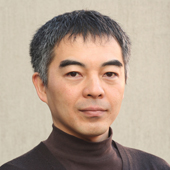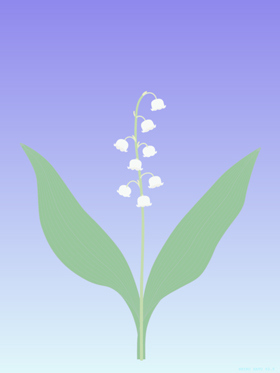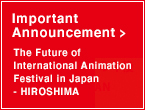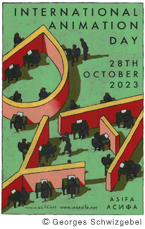Kotaro SATO

Animation Filmmaker, Lecturer at Tokyo Zokei University and Kanto Gakuin University
Born in 1967 in Tokyo, Japan. After graduating from the University of Tsukuba in 1990, Kotaro Sato joined NAMCO Ltd. (currently BANDAI NAMCO Entertainment Inc.) and has been engaged in the research and development of computer graphics and computer vision.
Sato’s independent animation short, “The Essence of War” (2002), was selected for the official competition of the KROK International Animated Films Festival 2004, and was screened officially at the International Animation Festival - HIROSHIMA 2004. Another independent animation short, “LET OUT” (2012), was screened officially at the Brisbane Asia Pacific Film Festival 2014 and at the International Animation Festival - HIROSHIMA 2014. He has served as a member of the selection committee for various international film festivals, including the International Animation Festival - HIROSHIMA 2010.
From 2004 to 2007, Sato was a part-time lecturer at Tama Art University and since 2009, he has been a part-time lecturer at Kanto Gakuin University. Likewise, he is a part-time lecturer at Tokyo Zokei University since 2018.
From 2016 to 2020, he served as the Chair of Media Design Laboratory (Sato Lab) at the Visual Creation Course, College of Science and Engineering at Kanto Gakuin University. At that time, he was engaged in education and research across a wide range of fields from the production of animation and live-action shorts, to the development of visual novels and VR content.
While working at NAMCO Ltd., he invented and commercialized a fortune-telling system with image recognition technology for tarot cards, “Camera de Tarot”, as a media art, and also, an image recognition technology for card games, “MELON CODE”, a 2D code designed for anti-counterfeit. He resigned from BANDAI NAMCO Games Inc. in 2012, and has been serving as the representative of Satory Design since 2013.
Sato coauthored the published books “Digital Moving Image” (2015), “Introduction to Computer Graphics Design” (2015), and “Jissen Multimedia” (2018).
Currently, he is the Director of the FDL Research Group where FDL stands for Folktale Description Language, an artificial language designed for structural analysis of stories by computer.
He is a member of the Society for Folk-Narrative Research of Japan (SFNRJ), the Institute of Image Electronics Engineers of Japan (IIEEJ), the Japan Society for Animation Studies (JSAS), Japan Animation Association (JAA), as well as ASIFA-Japan.
| 2023 | » Directed some episodes of the TV animation "Chiikawa". » Co-authored a textbook titled "Introduction to Multimedia". |
|---|---|
| 2018 | » Co-authored a textbook titled "Jissen Multimedia". |
| 2017 | » Directed an independent short animation "How to divide it into 7 pieces?". |
| 2016 | » Directed an independent short animation "Internal Peace and External Peace". |
| 2015 | » Released two textbooks "Digital Moving Image" and "Introduction to Computer Graphics Design". Kotaro Sato was the co-writer and a member of the editorial committee. |
| 2012 | » Directed an independent short animation "LET OUT". |
| 2010 | » Directed an independent short animation "From a Flower Factory". |
| 2009 | » Published a science fiction novel "The Moment of a Scientific Revolution". |
| 2006 | » Directed an independent short animation "Magnifying Glass". |
| 2004 | » Released an image recognition tarot fortune telling, "Camera de Tarot", as one of the products for Namco Ltd. |
| 2002 | » Directed an independent short animation "The Essence of War". |
| 2000 | » Published his treatise "Introducing the Folktale Description Language (FDL)" in a book "Images of Folktales - 3"(Ozawa Folktale Institute). |
| 1994 | » One-man exhibition of computer graphics illustrations "The Flowers of the Four Seasons" at Kunpei Dowa Kan. |
![ASIFA-JAPAN [Internationale Association du Film d'Animation - Japan Branch]](../common/images/img_logo.gif)











